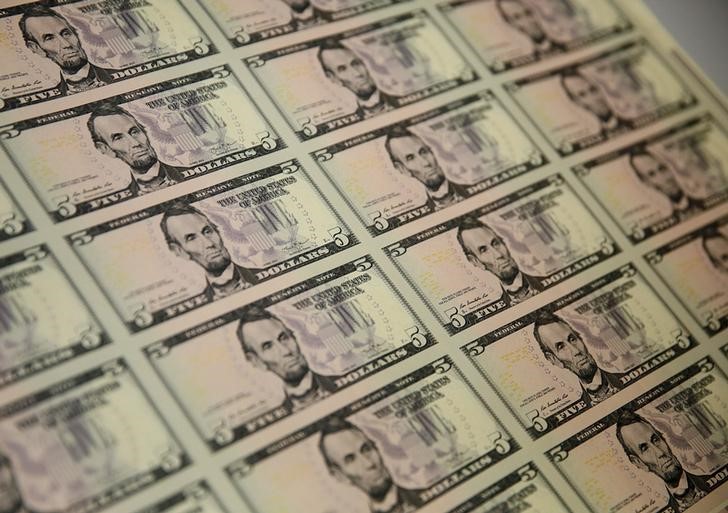Investing.com - The dollar edged higher against the other major currencies on Thursday, helped by data showing that U.S. jobless claims rose unexpectedly last week and as concerns over the ongoing oil rout persisted.
The U.S. Department of Labor said the number of individuals filing for initial jobless benefits in the week ending January 8 increased by 7,000 to 284,000 from the previous week’s total of 277,000. Analysts expected jobless claims to fall by 2,000 to 275,000 last week.
The dollar had also strengthened earlier, as prices for Brent crude, the global benchmark, fell below the $30 per barrel threshold for the first time since 2004, pressured lower by a global supply glut and fears of a slowdown in China.
The ongoing oil rout weighed on the commodity-related Australian, Canadian and New Zealand dollars.
AUD/USD edged up 0.11% to 0.6965, still close to four-month lows of 0.6930, and NZD/USD dropped 0.74% to two-month lows of 0.6466, while USD/CAD added 0.13% to 1.4358 re-approaching fresh 12-1/2 year highs of 1.4398 hit earlier in the day.
The Australian Bureau of Statistics reported on Thursday that the number of employed people declined by 1,000 in December, compared to expectations for a 12,500 drop.
The number of employed people increased by 75,000 in November, whose figure was revised from a previously estimated gain of 71,400.
Australia’s unemployment rate remained unchanged at 5.8% in December, confounding expectations for an uptick to 5.9%.
Meanwhile, USD/JPY rose 0.25% to 117.98.
Investors also remained cautious after a series of apparently coordinated gun and bomb attacks were carried out in the heart of the Indonesian capital of Jakarta Thursday morning. At least seven people were killed.
EUR/USD slipped 0.11% to trade at 1.0865.
The euro weakened earlier, after the minutes of the European Central Bank’s meeting on December 3 showed that some members of the governing council favored a larger cut to the deposit rate than was eventually announced.
The minutes also said the possibility was raised of expanding monthly asset purchases under the central bank’s quantitative easing program from the current level of €60 billion, or of frontloading asset purchases.
Elsewhere, the dollar was steady against the pound and the Swiss franc, with GBP/USD at 1.4412, close to Tuesday’s five-year low of 1.4349, and with USD/CHF at 1.0061.
Also Thursday, the minutes of the Bank of England’s latest policy meeting showed that the majority of policymakers said they expected pickup in inflation would be “be slightly more gradual in the near term than forecast in the Committee’s November Inflation Report projections.”
Recent volatility in financial markets also underlined the downside risks to global growth, the minutes said.
The U.S. dollar index, which measures the greenback’s strength against a trade-weighted basket of six major currencies, was up 0.19% at 99.10.
